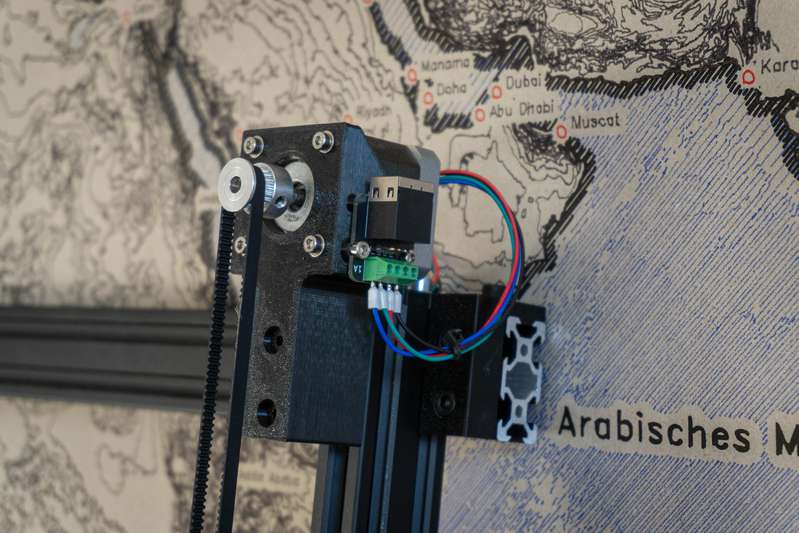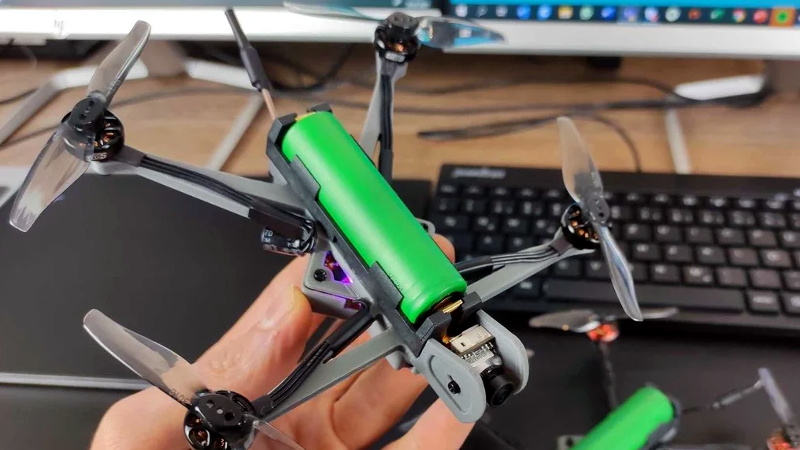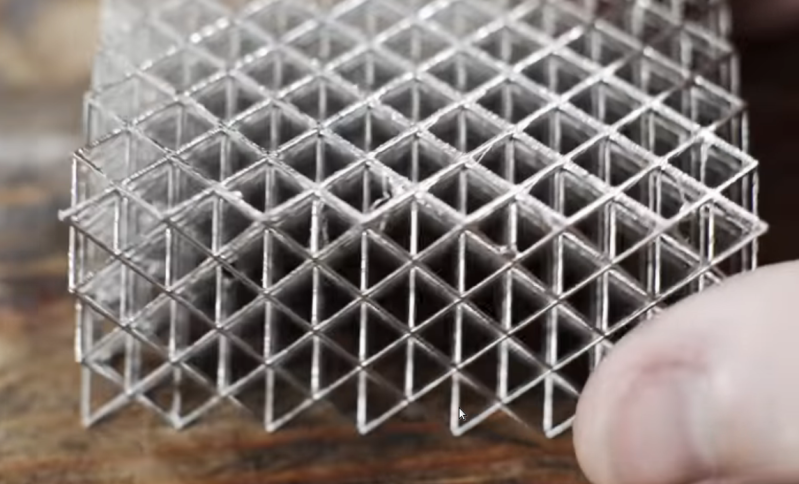The Original Xbox became an incredible machine for homebrew. In this episode we take a look at how the hardware and its powerful cpu, large storage and built in networking helped built an entire undergrounds homebrew scene.
External News
This pen plotter draws detailed maps the size of walls
Christopher Getschmann wanted a wall-sized map of the world. He soon realized, however, that it’s tough to actually buy such a map that’s both beautiful and detailed enough to satisfy his cartographic tastes. While many would simply move on to the next “thing,” Getschmann instead took things into his own hands, and built a pen plotter specifically to draw a massive 2×3 meter map for his wall.

Attack of the Flying 18650s
When somebody builds a quadcopter with the express purpose of flying it as fast and aggressively as possible, it’s not exactly a surprise when they eventually run it into an immovable object hard enough to break something. In fact, it’s more like a rite of passage. Which is why many serious fliers will have a 3D printer at home to rapidly run off replacement parts.
Avid first person view (FPV) flier [David Cledon] has taken this concept to its ultimate extreme by designing a 3D printable quadcopter that’s little more than an 18650 cell with some motors attached. Since the two-piece frame can be produced on a standard desktop 3D printer in a little over two hours with less than $1 USD of filament, crashes promise to be far less stressful. Spend a few hours during the week printing out frames, and you’ll have plenty to destroy for the weekend.

Creating Autonomous Flying Robots with the CogniFly Project
The CogniFly project is a foray into combining autonomous drones with AI vision, allowing for novel solutions when tackling tough problems.
How It Started
Smart agriculture is vital for making farming more efficient and thus more sustainable. This includes tracking crop yields, water usage, and weather over time, all of which requires ample amounts of data and powerful processing to make it useful. Some data scientists use satellite imaging to gather information, but it can tough in certain locations. The alternative is to use UAVs to get images, which is what the MISTLab postdoctoral researcher Ricardo de Azambuja set out to do in his project called “High Fidelity Data Collection for Precision Agriculture with Drone Swarms”. He originally wanted to use off-the-shelf DJI Tello drones and customize their control software, but since they had to be connected to laptops the entire time and with new Canadian UAV restrictions, a new solution was needed. The next idea was to combine an open source design with AI capabilities and a customized battery holder for an ultra-versatile platform.
Boosting Headphone Volume with a Tiny Smartphone Amplifier
This video guide from GreatScott! explains how to build a tiny Class A amplifier for your smartphone to boost headphone volume.
As the name suggests, an amplifier is a device that increases the amplitude (the power) of an electrical signal. Amplifiers can be used for any kind of electrical signal, but audio amplifiers are the most well-known. As an example, the audio output from an electric guitar is very faint, because that signal is produced entirely passively by the electromagnetic pickups. To push that up to a respectable volume, an audio amplifier is necessary. If your headphone volume coming from your smartphone is too quiet, GreatScott! explains how you do the same thing by building a tiny amplifier for headphones.
M5Timer Camera X ESP32 Camera (Best ESP32 Camera)
Timer Camera X is a camera module based on ESP32, integrated with ESP32 chip and 8M-PSRAM. The camera (ov3660) with 3 million pixels , DFOV 66.5 ° and shoot 2048×1536 resolution photo, built-in 140mAh battery and LED status indicator, featuring ultra-low power consumption design. There is a reset button under the LED. Through RTC (BM8563), timing sleep and wake-up can be realized
Modern Jukebox – 3D Printed, using a RaspberryPI
A 3D-printed mini jukebox powered by Volumio. Streams your music, Pandora, Spotify and AirPlay. Sound-reactive LEDs dance to your music!

Building a Robot Dog; #1 Hardware, Inverse Kinematics
Sup guys it’s nic here, in this series I will share my journey to develop a robot dog! Hop along! Parts used for now: Arduino Uno, PCA9685 16-channel servo motor driver, MG996R servo motors.
Electroplating 3D Printed Parts for Great Strength
Resin 3D printers have a significant advantage over filament printers in that they are able to print smaller parts with more fine detail. The main downside is that the resin parts aren’t typically as strong or durable as their filament counterparts. For this reason they’re often used more for small models than for working parts, but [Breaking Taps] wanted to try and improve on the strength of these builds buy adding metal to them through electroplating.
Both copper and nickel coatings are used for these test setups, each with different effects to the resin prints. The nickel adds a dramatic amount of stiffness and the copper seems to increase the amount of strain that the resin part can tolerate — although [Breaking Taps] discusses some issues with this result.
While the results of electroplating resin are encouraging, he notes that it is a cumbersome process. It’s a multi-step ordeal to paint the resin with a special paint which helps the metal to adhere, and then electroplate it. It’s also difficult to ensure an even coating of metal on more complex prints than on the simpler samples he uses in this video.

These Electric Ice Skates Finally Make the Sport Effortless
You probably haven’t noticed this, but athletes tend to be in very good physical condition. That is because most sports require a high level of fitness. You’re going to have a hard time winning a 100-meter dash if you collapse from exhaustion after 20 meters of sprinting. If you’re out of shape like I am, then you’ll probably agree that it isn’t fair that we don’t get to join in the fun. Apparently Simon Sörensen, of the RCLifeOn YouTube channel, felt the same way, which is why he designed these electric ice skates to make the sport effortless.
